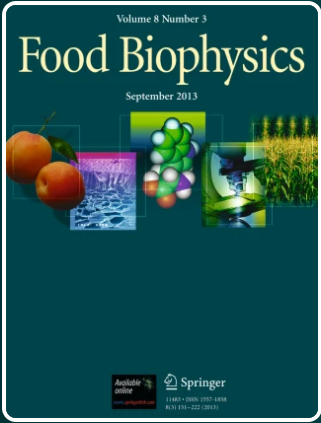Edible Oleoresin Infused Nanocomposite Film: A Novel Strategy for Nut Preservation and Aflatoxin Control
Abstract
Contamination by toxigenic fungi presents a significant challenge in nut preservation, with unpacked nuts exhibiting a higher infection rate of 35% compared to 5% in packed nuts. This study investigates the application of chili and garlic oleoresin nanoparticle coatings as a novel method for improving nut preservation and reducing aflatoxin contamination. Oleoresins were characterized for bioactive content and oxidative stability. Nanoparticle membranes were formulated using 1.5% carboxymethyl cellulose and 4.5% Arabic gum, reinforced with maltodextrin (CF1) or alginate (CF2). The results demonstrated that chili oleoresin enhanced the tensile strength of maltodextrin-based membranes from 1.71 MPa to 13.99 MPa, while garlic oleoresin improved the mechanical robustness of alginate membranes from 6.05 MPa to 27.18 MPa. Structural analysis using SEM confirmed changes in membrane architecture due to oleoresin incorporation. Chili oleoresin nanoparticles increased the oxidative stability of nut oils, prolonging induction periods by 23.1 h for hazelnut oil and 10.4 h for almond oil compared to controls. Garlic oleoresin-loaded composite film CF2 reduced total fungal load by 78.4% and aflatoxin B1 levels by 85.2% after 30 days of storage at 25 C. Chili oleoresin films showed a 72.1% reduction in fungal load. This study recommends the application of alginate-supported garlic oleoresin coatings as a potent biodegradable strategy for nut preservation and mycotoxin risk mitigation. Nano-emulsified chili oleoresin coatings achieved a 100% reduction in aflatoxin contamination in artificially inoculated peanut samples, whereas garlic nanoemulsion reduced aflatoxin levels by 87.97%. These findings highlight the potential of edible oleoresin-based nanoparticle coatings as an effective, sustainable strategy for nut safety enhancement.

 求助内容:
求助内容: 应助结果提醒方式:
应助结果提醒方式:


